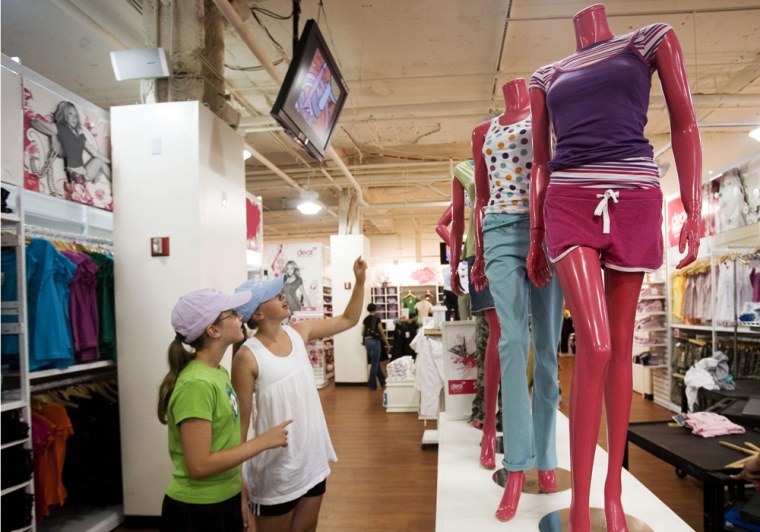As inflation continues to climb, it may be small comfort that prices for iPhones, skirts and drapes are falling.
Overall inflation is expected to be up 3.8 percent for the past 12 months when the Bureau of Labor Statistics reports the Consumer Price Index Friday. That follows 4.1 percent inflation in 2007 — the largest increase in 17 years.
Of course, because inflation is an average, not all prices rose equally, and some even fell.
Prices for women's and girl's clothes, which are always volatile, dropped 5 percent for the 12 months ended in April, according to the most recent numbers from the Bureau of Labor Statistics. Prices also slid for draperies, furniture, rugs, radios and televisions, new cars, computers, and, of course, homes.
The reason is simply supply and demand, said Wachovia Corp. economist Sam Bullard. "If the demand for products is not there, prices will subside a little."
That may be why the U.S. Department of Agriculture expects prices for food eaten at home to increase as much as 6 percent this year, while it forecasts food eaten at restaurants will rise a more modest 3.5 to 4.5 percent.
After all, consumers trying to save money cooking at home have little choice of what they'll pay for a gallon of milk, but budget-conscious diners can avoid restaurants completely, giving those restaurants less power to raise prices.
Rising gas and food prices mean shrinking real wages, which mean consumers have less to spend on discretionary items. Retail sales did jump 1 percent in May, as reported Thursday by the Commerce Department, but analysts pinned the increase on the $50 million in economic stimulus checks the government sent to taxpayers and predicted it wouldn't last.
Shoppers' budget crunch has prompted some retailers to cut prices. Replacements Ltd., of Greensboro, N.C., which sells old and new china, silver and crystal, lowered prices on 275,000 items by an average of 5 percent in early March.
"So far we've seen very positive customer response — an 8.7 percent increase in sales over the same period a year ago at the same time that the consumer confidence index was in decline," said Scott Fleming, the company's president.
Prices for technology, which are almost always shrinking, continue to fall.
Mobile headset maker Plantronics Inc. said in its annual report in May that profit margins were lower for its consumer products than for business products due to competition and pricing pressures. Hewlett Packard Co. said in its quarterly report last week, "We may have to continue to lower the prices of many of our products and services to stay competitive."
Apple Inc. said Monday prices for the new version of its cheapest iPhone would drop by half to $199. Carrier AT&T Corp. said it would take a $600 million hit in profits over two years subsidizing the new low price.
Not surprisingly, in areas where consumers have a choice, they're buying what's cheapest.
Discounter TJX Cos. notched higher retail sales in May, while sales at the more upscale Chico's FAS Inc. tumbled. Longs Drug Stores Corp. said in its most recent quarter that its generic drug sales have increased. Miller Brewing Co. has seen sales for its cheaper Miller High Life rise as sales for premium Miller Genuine Draft fall.
